Sea Kale / Spring / Summer / Autumn / Edible
Common Name
Sea Kale
Botanical Name
Crambe maritima
Scientific Classification
Kingdom – Plantae
Order –Brassicales
Family – Brassicaceae
Physical Characteristics
Leaves
When young, the leaf shoots emerge with a magenta to violet colour, slowly turning green as they grow, but often retaining a purplish colouration to their stems and edges. The leaves have a slightly teal hue, and can get enormous, with a succulent, thick texture and sharp crinkling along their edges. The leaves grow from a central base.
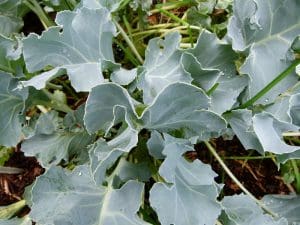
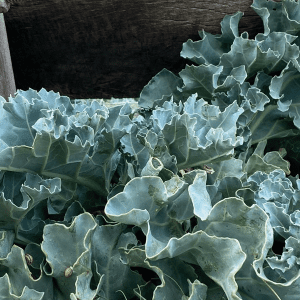
Flowers
Flower heads emerge as white, highly aromatic clusters of white blossoms.
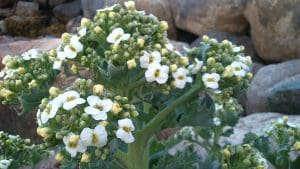
Seeds
The seeds are yellowy-green and globular.
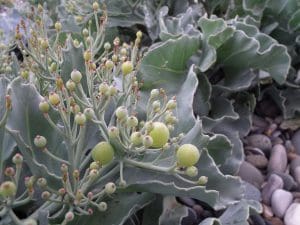
Habitat
Found mostly from Norfolk to Cornwall, and then on the coast facing the Irish Sea.
Often found on shingle beaches and coarse sand, well above the tide line.
In flower on a characteristic shingle beach
Known Hazards
None known
Could be Confused with
Very little resembles Sea Kale in the same habitat. Sea Holly has a similar silvery green colour, but you will quickly find out its viciously prickly!
Edible Uses
The young shoots are often prized, and this is the main culinary event. They should be blanched quickly and enjoyed for their full flavour with a minimum of additions. The younger leaves can be used as a vegetable much like supermarket kale, the unbloomed buds as a broccoli substitute and the flowers as a delicious addition to salads. The young seeds are horse-radish flavoured before they get too tough, and are great to pickle providing you leave enough to germinate the next generation. Do not attempt to use the roots.
Early spring for the shoots, early summer for the broccoli head-like leaves, high summer for the aromatic flowers and peppery seeds.
Never uproot them – these are perennial plants that can be very long lived. Try not to damage the young shoots. They are not common, so take care of the populations you find. Having said that, in a select few places they are incredibly abundant. Be careful you are not about to pick from a SSSI or other conservation designation site. In general stick to the British Botanical Society’s guideline of 1 in 20.
Notes on Herbal uses
A wonderful tonic food that will stimulate circulation and keep pathogens at bay, as well as being full of minerals and nutrients found by the seaside and synthesised by the plant to keep itself healthy in a challenging environment. It is said to be diuretic, although is not widely used in herbal practice.
Click here to see out guide to making herbal remedies at home
Extra notes from the Foragers
This plant was once considered a superior food to cabbage and could have become a staple. It was cultivated, but as urbanisation took place its range narrowed and its wide use was forgotten.
Leave a Reply
You must be logged in to post a comment.



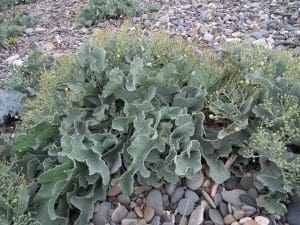
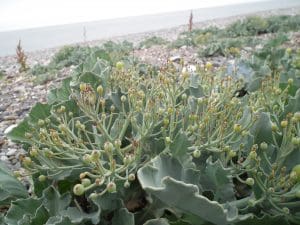
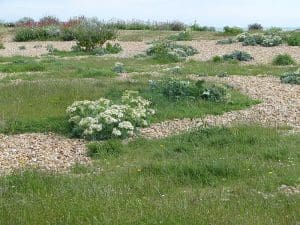



1 reply on “Sea Kale (Crambe maritima) Identification”